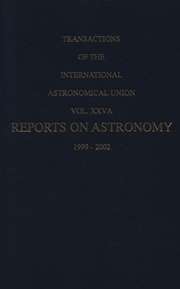No CrossRef data available.
Article contents
24. The Spectrum of WY Velorum
Published online by Cambridge University Press: 02 August 2017
Extract
WY Velorum(1) is a southern peculiar star discovered at Harvard(2) as being variable both in light and spectrum.
The available light observations start as far back as 1890. The first reference(2) to magnitude observations covers the years 1890-1922 and is based on 101 photographs which are distributed rather evenly throughout the interval, they show that from 1890 to 1901 there was a slow and apparently steady increase in light from magnitude 9·8 to 9·2; and since 1902 the light has slowly decreased.
- Type
- Part IV Symposia
- Information
- Copyright
- Copyright © Cambridge University Press 1954


